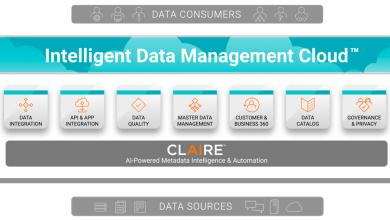
 Over the past few years, companies have come to recognise the necessity of a backup plan in the event of unforeseen disruptions. The historical record bears the wounds of an unavoidable catastrophe, such as the pandemic that continues to plague us today. Heikki Nousiainen, CTO & Co-founder of Aiven, recently spoke with us, and his insights on the industry’s economic backdrop and the role of cloud technology have left us at DSA feeling quite enthusiastic.
Over the past few years, companies have come to recognise the necessity of a backup plan in the event of unforeseen disruptions. The historical record bears the wounds of an unavoidable catastrophe, such as the pandemic that continues to plague us today. Heikki Nousiainen, CTO & Co-founder of Aiven, recently spoke with us, and his insights on the industry’s economic backdrop and the role of cloud technology have left us at DSA feeling quite enthusiastic.
The Problems
Heikki said, “There are 4 broad areas to explore,” when asked what difficulties the organisations faced during the Covid-19 outbreak that compelled everyone to develop new ways to conduct business. According to Heikki and research from CPA Australia, these are:
- Operational Disruptions
Supply chain interruptions were one example of the problems encountered. The import and export of raw materials and commodities were hampered by the widespread disruption of shipping and transportation caused by the various lockdowns and movement controls. Just-in-time inventory holders and businesses without a wide range of suppliers and logistical partners fared the worst. - Technological Barriers
Another formidable obstacle was the potential danger posed by new technologies. With the shift toward remote work, employees are more likely to access business systems through their own personal networks and devices, which presents a number of cybersecurity vulnerabilities. IT departments also came under intense strain as they had to provide all of their employees with the hardware, software, and support they required to begin remote work virtually immediately. - Financial Risk
Another significant issue was the financial risk, particularly in boardrooms. Investments would have to be made to pivot company models to cope in the midst of a pandemic, such as into the aforementioned supply chain diversification and digital transformation. Conversely, severe financial decisions would have to be taken regarding reducing workforces, renegotiating debt, asset disposal or slashing non-essential spending. - Human Factor
Organisations needed to give serious thought to how their staff would adjust to working remotely, how teams would interact across borders, and whether or not staff had access to the systems and equipment they needed to use technologies like videoconferencing solutions. Human resources had to work to keep a company’s culture intact while simultaneously enforcing standards for social isolation and workplace safety as the pandemic spread.
Cloud Technology to the Rescue
We asked Heikki, “Do you think businesses can still return to old paradigms or cloud services have become an uncompromisable and unavoidable reality?” Since companies had to transform, many adopted cloud solutions in order to cope with increased demand and maintain uninterrupted service delivery.
Heikki said candidly, “No, I don’t think businesses can revert to past ways of operating.” Moving to the cloud was a requirement during the epidemic, and the resulting flexibility, freedom of choice, scalability, and cost-effectiveness have had a profound influence on how businesses operate, how personnel do their duties, and how new applications are created. Using outdated, clunky, and expensive infrastructure is unthinkable.
The cloud’s independence from physical location and device selection allows organisations to pick the services that work best for them. There have been enormous productivity gains in the software development industry thanks to these readily available tools that need nothing in the way of the initial investment.
Second, unlike on-prem infrastructure, the cloud can be scaled up or down as needed, saving money for enterprises. It’s easy to save money by using the cloud. While there will be costs associated with getting started, such as setup and employee education, cloud computing allows organisations to realise economies of scale at a far quicker rate than traditional on-premises equipment. Finally, a multi-cloud strategy aids in resilience and business continuity by providing a fallback plan in the event that one cloud provider’s services become unavailable.
The Rising Need for Better Data Governance
The rise of cloud adoption and the advent of technologies such as IoT, AI and blockchain has also brought with it a fair share of challenges, namely around cybersecurity and data protection. These technologies are data-intensive, and given the global, distributed nature of modern-day work and the economy, that data needs to be able to move seamlessly across borders.
As the conversation went on, Heikki commented, “We at Aiven certainly believe the strong trends on the cloud and open-source adoption to continue. Both the cloud and open-source contribute significantly to the business’s ability to innovate and meet the rapid development cycles required for a business to succeed today.”
He added that one of the key areas that he and his team at Aiven are tracking with interest is the growing need for data governance. With the cloud and DevOps, there has been a rapid shift of the ownership and responsibilities for data processing systems from traditional centrally managed CIO-led organisations into decentralised business line-driven functions. While this has been important for productivity, organisations are awakening to the need to implement better data governance regimes over the whole organisation to stay on top of compliance requirements.
Therefore, organisations need to be able to understand what data they are collecting and processing, where and how it is stored and handled and who has access and has accessed that data.
On the other hand, and perhaps even more significantly, the introduction of solid data governance and data catalogues can be a significant value enabler to businesses. Re-using and re-combining data for new innovation and value-adding services. Heikki believes that businesses with the most robust means to provide their employees with access to such resources can expect to be in a good position in the rapidly evolving competitive business landscape.
The Future of the Cloud in the Region
All in all, Heikki is of the opinion that the future of ASEAN seems to be a vibrant one. He shared that as a block, ASEAN recorded a combined GDP of USD $3.2 trillion in 2019 – the 5th largest in the world and is on track to become the 4th largest by 2030. The block also adopted the Consolidated Strategy on the Fourth Industrial Revolution (4IR) for ASEAN during the 38th and 39th ASEAN Summits and have an agreement on Electronic Commerce that will spur the region’s push for digital transformation and private investment in digital infrastructure development such as 5G networks and data centres, cloud computing, cybersecurity, Artificial Intelligence and smart manufacturing.
As such, digitalisation will continue to be a pertinent theme across ASEAN moving forward. In a Google, Temasek and Bain report on ASEAN’s digital economy, it was revealed that 40 million consumers came online for the first time, bringing regional internet penetration up to 75 per cent. Amongst the 440 million internet users in ASEAN, 8 out of 10 are digital consumers, 350 million of them transacted online and the internet economy in the region will continue to attract greater adoption, deeper engagement and generate better stickiness.
In order to feed the appetites of the region’s digital consumers and businesses, technological adoption will continue to grow, which will only mean that the rates of cloud adoption in the region will continue to rise. In Southeast Asia, the cloud computing market revenue is estimated to reach USD $40.32 billion by 2025 because of increased demand for cloud computing among Small and Medium-sized Enterprises (SMEs). Conversely, investment into infrastructure such as data centres will grow as well – a Savills report revealed that Jakarta is poised to be ASEAN’s new growth engine for the data centre market.
“The rise of technological innovations such as the blockchain, metaverse, autonomous vehicles and AI will create new opportunities for growth and diversification. Companies that are brave enough to seize opportunities in these fields could solidify their own companies’ futures and also help to cement ASEAN’s position as a global hub of innovation and entrepreneurship,” he concluded.




